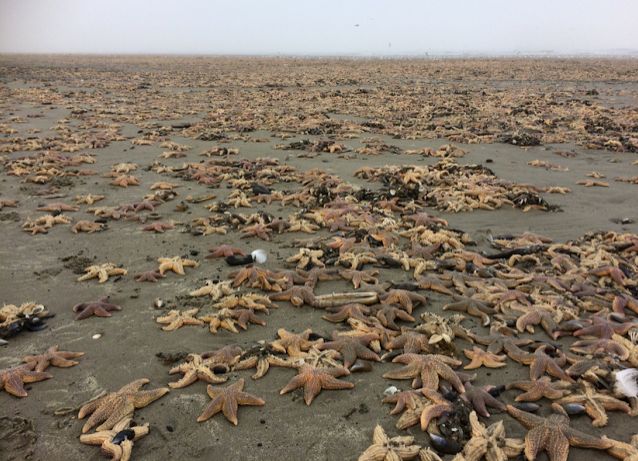The latest wave of ocean die-offs in the North Atlantic adds to a long list of mass mortality events indicating that marine creatures are in peril.
Man-made heat infused into the oceans from climate-altering fossil fuels has doubled since 1997. That’s the equivalent energy of detonating one atomic Hiroshima-style bomb every second for 75 straight years.
The Gulf of Maine stretches from Cape Cod to southern Nova Scotia. It’s a vast body of water that is warming 99.85 percent faster than the rest of the world’s oceans.
Warmer oceans along with increased acidity are affecting all marine life. Population distributions are changing. Creatures are appearing in locations where they have not been before or they are disappearing from where they normally reside. Some marine life is starving while others are succumbing to more diseases. Eighty scientists from 12 countries, experts with the Union for Conservation of Nature, concluded that global warming is making the oceans sicker, spreading diseases throughout the Animal Kingdom including people.
Since November, 2016, millions of herring have turned up dead in the Bay of Fundy, the northern Gulf of Maine and in Nova Scotia. According to Colin Sproul, from the Bay of Fundy Inshore Fisherman’s Association, the number could be as high as a billion dead fish. In 75 years of local fishing history, nothing matches this mass mortality event.
Last week reports circulated that a mysterious mass die-off in excess of 20,000 lobsters, sea stars, clams, crabs and one humpback whale washed-up on the western shores of Nova Scotia.
Tests so far by the Canadian Department of Fisheries and Oceans have yet to determine the cause(s).
This much we know: The Gulf of Maine is warming quickly. The Bay of Fundy is warmer than usual with temperatures more akin to fall rather than winter.
In November, an unusual plankton bloom occurred in the area likely linked to warmer water temperature. The increased temperature in the northern Gulf of Maine is signalling change in the environment, which resulted in mass death.
On the other side of the North Atlantic, in November, 2016, thousands of sea stars were disgorged along Southsea Beach near Portsmouth, in southern England. A couple days before New Year’s Eve, thousands of sea stars were left stranded while the stench of death lingered for miles near the seaside resort of Callantsoog, Holland.
Since 2009, mass sea star stranding has occurred in the Atlantic from 50,000 in Ireland, twice that year, to an estimated 100,000 along South Carolina’s shores in 2014.
Beginning in 2011, along the west coast of North America, sea urchins and millions of sea stars, in 20 different species, have expired. The occurrence of deadly algal blooms is implicated. These toxic blooms are predicted to occur more frequently. Global warming, rising ocean temperature, increased ocean acidity, destruction of shoreline habitat including loss of sea grass meadows and increased runoff from land-use developments are contributing to more algal blooms.
The loss of both sea stars and urchins will have many unintended consequences. Sea urchins provide essential food for gulls, crabs, rays, sharks, seals and sea otters. The presence of sea stars is crucial because they affect other animals and marine life in the ocean. They are predators feeding on barnacles, snails, mussels, clams, oysters and spiny urchins. Sea stars are keystone species; they help maintain balance in marine biodiversity.
It is heartbreaking to watch the unraveling of ocean ecosystems, the death of Australia’s Great Barrier Reef, the rampant overfishing and the on-going illegal Japanese whale poaching in the Southern Ocean Whale Sanctuary.
It is time to end all fossil fuel subsidies immediately, and follow China’s $493 billion investment in creating 13 million new jobs in the renewable energy sector.
Nature is showing us that as the oceans warm, marine life and its habitat are killed. The time to turn this around is now because our health is inexorably linked to the fate of the oceans. We need healthy oceans in order to survive on our blue planet.
#Compassion

Thousands of dead Dutch sea stars, December 29, 2016.
Earth Doctor Reese Halter’s upcoming book is “Save Nature Now.”
